In the field of geotechnical engineering, the problems that can be solved accurately through theoretical calculations are very limited, especially the calculation of pile bearing capacity. The foundation pile is a concealed project buried in the ground. The bearing capacity of the pile is related to many complicated factors such as the pile type, pile material, pile forming, and soil properties around the pile. So far, it cannot be given simply by theoretical calculation like structural engineering.
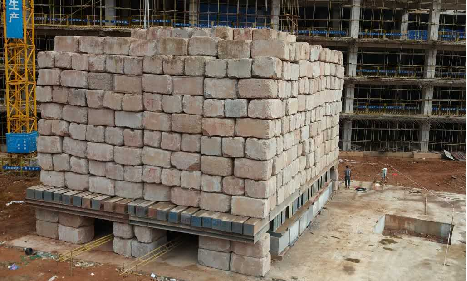
Classification by test purpose
According to the purpose of the test, the static load test can be divided into two types: the pile test that provides the basis for the design and the acceptance test of the engineering pile.
01. Static load test to provide basis for design
Static load test of test piles that provide basis for design is to test piles designed according to factors such as site, geological survey data, buildings (structure types) or treated foundations, so as to verify whether the designed piles can meet the requirements, and also provide the test parameters for the designer to adjust or process. In engineering practice, the designed pile or treated foundation can be verified through the static load test to determine whether the designed pile or foundation treatment can meet the requirements of the building (structure) for the bearing capacity of the foundation. Pile parameters and construction techniques are adjusted to save costs on the premise of ensuring use and safety.
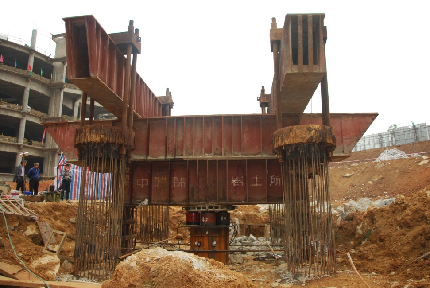
If the static load test is used to test the vertical ultimate bearing capacity of a single pile, and it is found that the ultimate value of the compressive bearing capacity of the foundation pile is more than twice the characteristic value of the design bearing capacity, then a lot of available resources will be wasted. The bearing capacity of some foundation piles does not meet the design requirements, and even the construction of engineering piles begins without static load test piles, which will cause great hidden dangers. In case the bearing capacity test finds that the design requirements are not met, it may be necessary to take measures such as layer reduction and unloading, pile repair or change of foundation type, and soil reinforcement between piles, which will cause huge economic losses.
The static load test that provides the basis for the design is generally carried out before the construction of the engineering pile. The results of the static load test of the pile test may change the parameters and construction technology of the engineering pile. The test piles that provide the basis for the design should be loaded until the rock-soil resistance at the pile side and pile end reaches the limit state; when the bearing capacity of the pile is controlled by the strength of the pile body, it can be loaded according to the loading amount required by the design or until the pile body fails . The position of the test pile should be close to the geological drilling position so as to check.
02. Acceptance test
The acceptance test of engineering piles is to check and verify the bearing capacity of engineering piles after construction. Generally, after construction, a certain proportion is selected for static load test to verify whether the bearing capacity of engineering piles meets the design requirements. If not, measures for reinforcement or reprocessing should be taken.
Static load test for sampling inspection for engineering acceptance. The test is to check whether the foundation pile or foundation meets the design requirements and provide a basis for engineering acceptance. Taking the vertical compressive test of a single pile as an example, the maximum loading should not be less than 2.0 times the characteristic value of the vertical compressive bearing capacity of the single pile required by the design to ensure sufficient safety.
For the acceptance of engineering piles, there are two points to pay attention to:
1. For intensive pile sinking construction, engineering piles should be checked and tested by static load test. At the same time, the number of test piles in the static load test that provides a basis for the design in the early stage is generally small, and the soil squeezing effect of the group piles is not fully manifested. The test results should not be used as the test results of engineering piles, nor should they be used as the basis for acceptance of engineering piles.
2. In the vertical load test of piles, should the pile strength factor be considered in the loading amount? The occurrence of the ultimate bearing capacity of the pile is divided into two situations, one is the destruction of the soil around the pile (including large deformation), and the other is the destruction of the pile body. It is debatable whether the characteristic value of pile bearing capacity can be determined directly based on the ultimate bearing capacity obtained from the pile load test, because the actual pile body strength of some piles may be much greater than the design strength. Therefore, the load of the vertical load test of the pile (especially in the pile test stage) should not exceed the ultimate bearing capacity determined by the design strength of the pile. If the ultimate bearing capacity of the pile has exceeded the ultimate bearing capacity determined according to the design strength of the pile body, Then the strength of the pile body should be recalculated and the corresponding design adjustments should be made, otherwise the submitted test results are unreasonable, and it is easy to bury hidden dangers for the project.
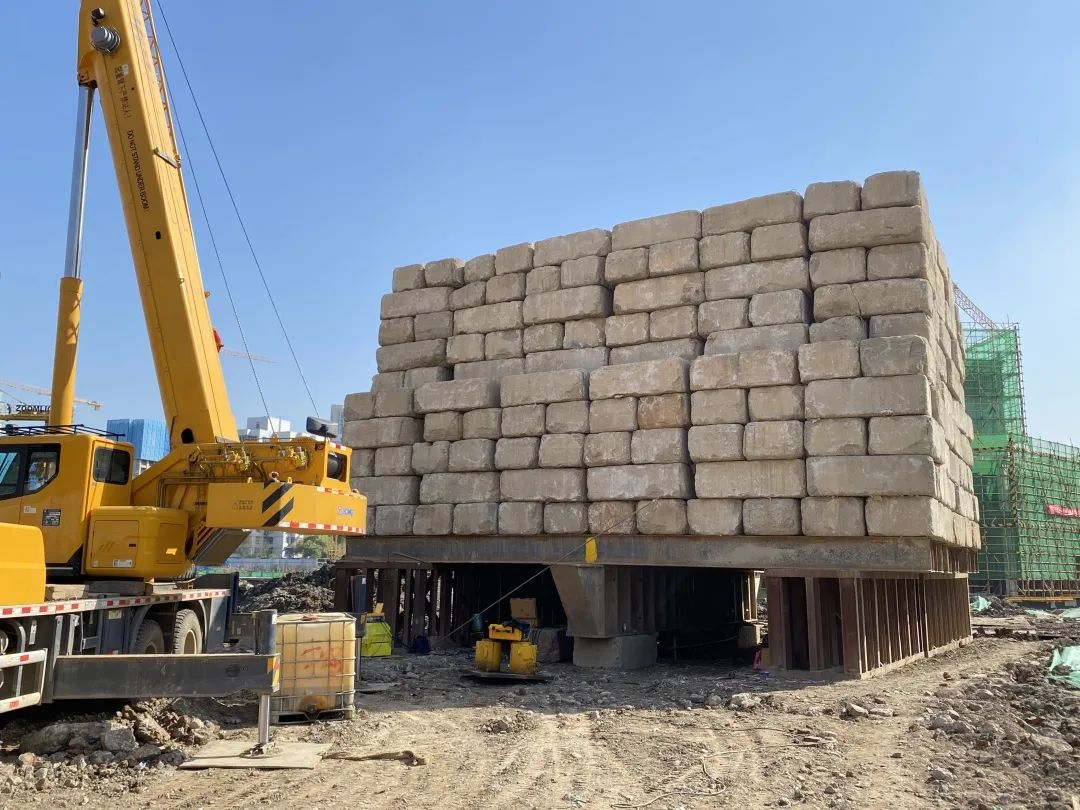
Classified by test method
Static load test is the most intuitive and reliable traditional method to test the bearing capacity of foundation piles. According to the test method, it is mainly divided into vertical static load test of single pile, horizontal static load test of single pile, soil (rock) foundation load test (shallow plate load test, deep plate load test) test, rock foundation load test), composite foundation load test (including vertical reinforcement load test), bi-directional test, anchor load test, etc.
01. Single pile vertical compression static load test
Single pile vertical compressive static load test is suitable for determining the vertical compressive bearing capacity of single pile. The test principle is to apply vertical pressure step by step on the foundation pile, and observe the settlement of the pile top over time to determine the corresponding vertical compressive bearing capacity of the pile foundation. When the pile body is embedded with strain and displacement sensors or displacement rods, the strain of the pile body or the displacement of the section of the pile body can be measured, and the layered side resistance and end resistance of the pile can be calculated.
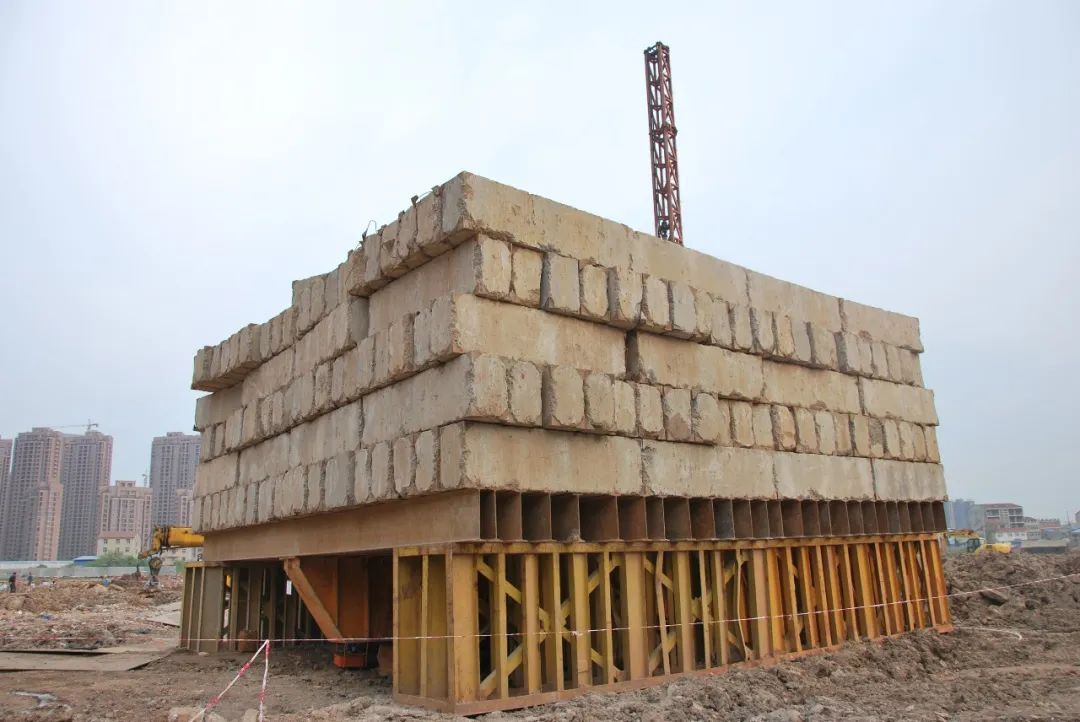
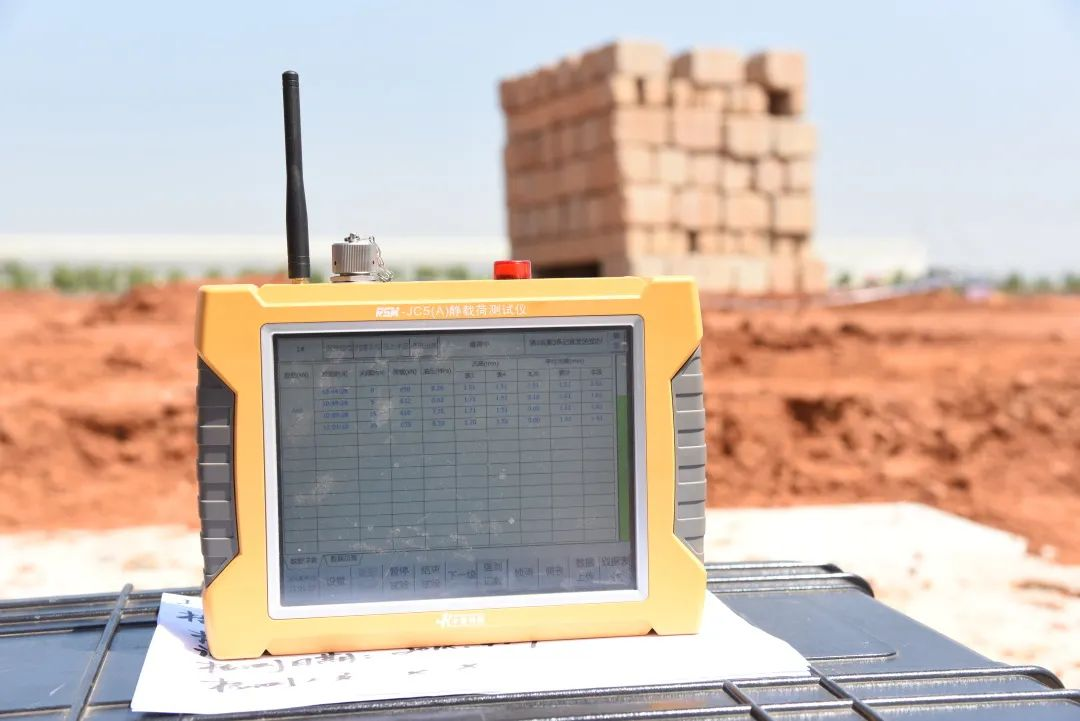
02. Single pile vertical pull-up static load test
Single pile vertical uplift static load test is suitable for testing the vertical uplift bearing capacity of single pile. The principle of the test is to apply a vertical upward pull-up force step by step on the pile foundation, and observe the amount of uplift generated at the pile top over time to determine the corresponding test method for the vertical uplift bearing capacity of the pile foundation. When strain and displacement sensors are buried in the pile body or displacement measuring rods are buried in the pile end, the strain in the pile body or the uplift of the pile end can be measured, and the layered uplift lateral resistance of the pile can be calculated.
Single pile vertical uplift static load test is a test method close to the actual working conditions of vertical uplift piles to determine the ultimate bearing capacity of single pile vertical uplift. Compared with the pile side (positive) frictional resistance exerted by the vertical pressure on the pile top, when the pile top is pulled out and the pile body is in tension, due to the decrease of the vertical principal stress in the soil around the pile and the Poisson effect of the pile body, etc., It will result in weakening of the pull-out (negative) frictional resistance of the pile side. For concrete uplift piles, when the uplift bearing capacity is relatively high and there are limited requirements for crack resistance, it may be difficult to design and calculate the uplift piles under the stress state of the pile top pullout bearing capacity (the pile body is under tension). Under these circumstances, field tests are even more important in determining the vertical uplift capacity of single piles.
03. Single pile horizontal static load test
The single pile horizontal static load test is suitable for testing the horizontal bearing capacity of a single pile and estimating the proportional coefficient of the horizontal resistance coefficient of the foundation soil under the free test condition of the pile top. The principle of the single pile horizontal static load test is to apply horizontal thrust step by step or cyclically on the pile foundation, and observe the horizontal displacement of the pile top over time to determine the corresponding horizontal bearing capacity. When the pile body is embedded with a strain measurement sensor, the bending strain of the cross section of the pile body can be measured, the bending moment of the pile body can be calculated, and the corresponding horizontal load can be determined when the concrete cracks in the tension zone of the reinforced concrete pile.
The test piles that provide the basis for the design should be loaded until the top of the pile has a large horizontal displacement or the structure of the pile body is damaged; for the sampling test of the engineering piles, the loading can be controlled according to the allowable value of the horizontal displacement required by the design.
04. Soil (rock) foundation load test
The soil (rock) foundation load test is suitable for testing the bearing capacity and the bearing capacity of the natural foundation, rock foundation and the artificial foundation after replacement, preloading, compaction, compaction, dynamic compaction, and treatment within the range of stress under the bearing plate. deformation parameters. The test principle of the soil (rock) load test is to apply a load to the foundation soil (rock) on a bearing plate with a certain area, and determine the bearing capacity and deformation characteristics of the rock and soil within the main influence range of the stress under the bearing plate. . The foundation load test is to verify the bearing capacity and obtain the deformation parameters of the foundation. The foundation load test is actually a field simulation test directly carried out on the foundation soil, which is similar to the working conditions of the building foundation. It is generally believed that the bearing capacity of the foundation determined by the foundation load test is closer to the reality than that obtained by other test methods.
Soil (rock) foundation load test is divided into shallow plate load test, deep plate load test and rock foundation load test. The shallow plate load test is suitable for determining the bearing capacity and deformation parameters of shallow foundation soil, broken and extremely broken rock foundations. The deep plate load test is suitable for determining the bearing capacity and deformation parameters of the deep foundation soil and the pile tip soil of large-diameter piles, and the test depth of the deep plate load test should not be less than 5m. The rock foundation load test is suitable for determining the bearing capacity and deformation parameters of complete, relatively complete and relatively broken rock foundations. Some standards refer to soil (rock) foundation load test and composite foundation load test as plate load test.
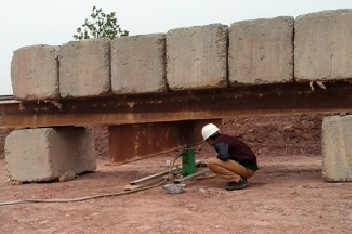
05. Composite foundation load test
Composite foundation load test is suitable for cement-soil mixing piles, sand-stone piles, rotary grouting piles, rammed cement-soil piles, cement fly ash gravel piles, concrete piles, tree root piles, lime soil piles, column hammer expansion piles and dynamic compaction replacement Load test of single-pile composite foundation and multi-pile composite foundation composed of composite foundations such as piers and other vertical reinforcements and surrounding foundation soil. It is used to determine the characteristic value of the bearing capacity of the composite foundation within the influence range of the stress under the bearing plate.
The composite foundation contains vertical reinforcement load test, which is suitable for determining composite foundations such as cement-soil mixing piles, rotary grouting piles, rammed cement-soil piles, cement fly ash gravel piles, concrete piles, tree root piles, and dynamic compaction replacement piers. The vertical bearing capacity of the vertical reinforcement is generally tested according to the single pile vertical compressive static load test method.
06. Bi-directional load test
The bi-directional static load test is suitable for the test and evaluation of the vertical bearing capacity of foundation piles when the traditional static load test conditions are limited. The bi-directional test is to embed a special loading device (load box) into the corresponding position in the pile together with the steel cage before concrete pouring (the specific position depends on the different purposes of the test), and the loading box The pressure pipe and other required test devices (displacement, strain, etc.) are led from the pile body to the ground, and then poured into the pile. The booster pump pressurizes the load box on the ground, and the load box generates forces in both directions up and down and transmits them to the pile body. The bearing capacity of the test pile is tested by using the self-generated reaction force of the pile body.
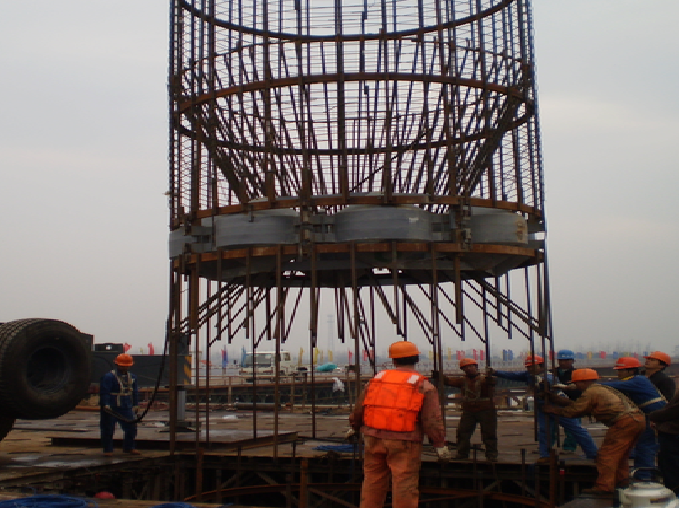
Welding and lowering of load boxes
Installation of datum beams and datum piles
07. Anchor load test
One end of the bolt is connected to the external load-bearing member, and the other end is anchored in the stable rock and soil body, and the tensile force is transmitted to a tension member in the rock and soil layer. Anchor is also an important treatment method in foundation treatment, and its use is relatively common. For example, foundation anchors are often used in basements, also known as anti-floating anchors, which mainly bear the buoyancy of groundwater.
There are also many corresponding specifications and classifications for anchor bolt tests in China. In summary, anchor bolt load tests can be divided into the following methods:
1. The basic test of the bolt is used to determine the ultimate pull-out bearing capacity of the bolt, provide the design parameters of the bolt and verify the construction process of the bolt. The loading and unloading methods of the basic bolt test are also divided into multi-cycle loading and unloading methods, hierarchical maintenance load methods, and single-cycle loading and unloading methods. According to different test objects, choose the appropriate way to carry out the test.
2. The anchor creep test can be used to detect the creep characteristics of the anchor, and provide anchor design parameters for controlling creep and prestress loss. The anchor creep test is mainly a graded maintenance load method.
3. The bolt acceptance test can be used to determine the working state of the bolt under the acceptance load, determine whether the pullout performance of the bolt meets the design requirements, and provide a basis for engineering acceptance.
4. The bolt bond strength test can be used to determine the bond strength between the grouting body of the anchorage section of the bolt and the rock-soil layer.
5. The holding load test can be used to determine the holding load of the anchor rod body, and can also be used to determine the locking force of the prestressed anchor rod.









